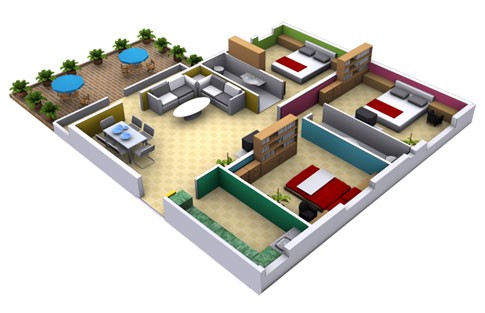An Introduction to Modern Real Estate
Post on: 11 Апрель, 2015 No Comment

For a good decade and a half, owners of open-plan homes have smiled as public interest grew, prices rose, and once-ignored architects were rediscovered. Mid-century-modern homes in suburbs nationwide were suddenly hip and ripe for restoration. Cities followed suit as suave and sophisticated glass-walled condos and lofts sprung up everywhere—–from Herzog + de Meuron’s 40 Bond Street in New York to the Vogel House by Neumann Monson Architects in Iowa City—–suggesting that the long-held promise of modern living on a national scale was finally coming to fruition, or at least gaining ground on the featureless tract homes and by-the-numbers townhouses that had long held sway.
Then, starting in 2006, house prices began to slide. They were plummeting by 2007, as homeowners who’d taken advantage of some dubious financial gymnastics—–including loans granted with no down payment and little attention paid to the buyer’s finances—–were unable to pay their mortgages.
What former Federal Reserve chairman Alan Greenspan once called “froth” on the housing market had turned out to be an untenable bubble whose subsequent burst would leave global real estate markets in shambles. Modern developments were not immune. Among the saddest casualties of the downturn was the Racquet Club of Palm Springs, a once-iconic tennis club with adjoining residences, some by modernist Albert Frey. The walls of its historic buildings were opened up for restoration and foundations were laid for new residences, then work stopped. The result is a dusty ghost town.
Though things are unremittingly lousy at present, there is hope for modern real estate. Parts of the country are still seeing modern buildings keep pace with and even outstrip traditional construction. In the Denver area, through 2008, modern tract homes were selling for 40 percent more than their traditional counterparts, according to broker Craig Mayer of Mile Hi Modern. Mid-century designs also continue to perform better in several areas of Southern California, including Palm Springs and the San Fernando Valley. Though overall prices have declined, residents and brokers say, modern homes still sell for more than their non-modern neighbors. Good news or cold comfort?
In addition to frozen lines of credit, nervous bankers, and buyers wary of the bottom falling out of their investments, modernism still faces the same challenges as ever from a real estate market with little regard for design.
In the mainstream, modern residential real estate has developed as a niche industry, with trained brokers, lenders, and appraisers who understand the market for modern homes enough to connect savvy buyers with savvy sellers. In no part of the country, though, can sellers simply assume that the average broker will get the best price for their modern home—–or ensure its continued existence by steering it to a sympathetic buyer. Nationwide, glass-walled beauties are often marketed less on their artistry, construction, and history than on their number of bedrooms and square footage—–or, more ominously, the size of the lot.
Modern homes have been a specialty market since the late 1940s, when the first modern tracts were built. Ned Eichler, who ran marketing for his father, Northern California developer Joseph Eichler, decided early on that modern buyers were a different sort of beast and went out of his way to cater to them. At the other end of the spectrum, a specialized market in high-end modern homes began to develop in the late 1960s. British jetsetter Lord Peter Palumbo got the ball rolling in 1968 when he purchased Mies van der Rohe’s Farnsworth House outside Plano, Illinois, the way a collector might buy a painting.
The idea of collecting fine architecture came into its own in the 1990s, when Los Angeles enthusiasts like David Zander, Joel Silver, and a battery of film stars started investing in classic modern homes. Realty firms that specialized in modern and other architecturally distinguished homes grew up to serve high-end buyers.
The 1990s also saw design-savvy buyers flocking to modern tracts, snapping up properties that had once been ignored. Local brokers quickly specialized in modern homes.
In the future, though, real growth will come from homes that are energy-efficient, are close to urban amenities, and foster a sense of community. Green-designed condos, townhouses, and clustered housing were just making their marks before the current downturn, and, though money is scarce, the premises of these projects—–aesthetically and environmentally—–remain vital and sound.
“A piece of architecture is always going to be worth more than the generic house next door with no design value whatsoever,” says Brian Linder, a broker with the Value of Architecture in Los Angeles.
Don’t forget to check out our resource map of regional mid-century modern realtors in the United States.














